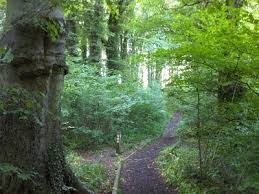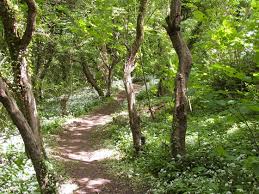A walk through Cuckoo’s Nook and the Dingle nature reserve will take you through two completely different habitats, . The same walk will also transport you across 60 million years of geological time. That’s because the reserve lies over a geological fault line, where on one side, coal measures lie near the surface, and on the other, limestone lies near the surface. This has a direct effect on the plant life that you’ll find above the soil.
Cuckoo's Nook is an ancient (over 400 years old!) semi-natural acidic woodland, with species like holly, oak, birch and alder. These are acid-loving trees, and they grow on the coal measures. Cuckoos’ Nook is also a bluebell woodland, and is flushed with bluish-purple in May each year!
Walk along into the Dingle, however, and you’ll find yourself surrounded by hawthorn, ash, beech, elder and large-leaved lime trees, which love the alkaline limestone soil. It is simply a fantastic place for a woodland walk, as you can wind your way through twists and turns, with woodland wildflowers at your feet and birds in the trees overhead, with the babbling Longwood Brook running next to the path. Any time of year is a great time to visit, but late spring brings carpets of bluebells, and early summer fills the air with the sweet smell of wild ramsons.
Cuckoo’s Nook and the Dingle is a great place to learn about geology – you might even find fossils there, as there are exposed Silurian limestone beds in the Dingle! The site forms a long horseshoe shape, with both access points off the Sutton Road, which makes a great circular health walk.




